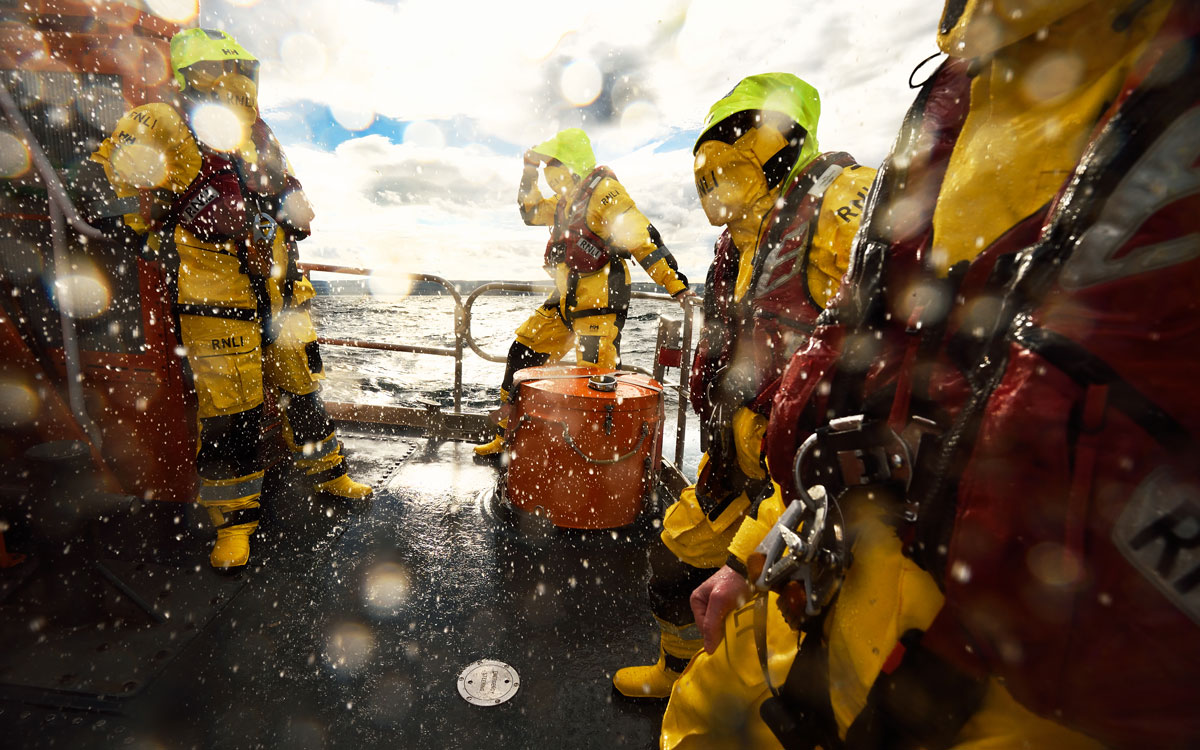Heritage clothing brand teams up with RNLI to spread safety messaging for boaters and kit out lifeboat crews with breathable clothing tailored differently for men and women
Over 1,200 yachts crewed by world-class sailors, families and first-time racers, battled it out on the water in last month’s Round-the-Island race. While the largest monohull, Jethou took the line honours in its class, the much sought-after Golden Roman Bowl was won by the smallest competing yacht – an Alacrity 18 Bilge Keel Eeyore, skippered by Jo Richards.
Also competing, was ocean racer Pip Hare, in her 60ft IMOCA, Superbigou. Clothing partner, Helly Hansen, who are sponsoring Pip’s Vendée Globe campaign, developed a new line of branded race clothing especially for the event. Over the weekend they also held free lifejacket checks in conjunction with the RNLI.
Educating boaters about drowning is just one of the goals of the Norwegian company, who’ve signed a five-year partnership to promote the RNLI’s safety messaging and clothe the charity’s all-weather lifeboat crews.
Last month, Pip Hare visited the RNLI College in Poole to test the kit in the charity’s sea survival pool, complete with wave and storm effects. “The clothing that they developed together for the lifeboat crews is top notch,’ she said. “It’s great to work with a brand that takes safety and performance so seriously.”

The new gear – which is now on service at lifeboat stations across the UK and Ireland – uses waterproof and breathable Helly Tech® fabric, designed to increase comfort compared to the previous non-breathable fabric. It’s reinforced for exposed areas, and the technical layering system (base, midlayer and top layer) ensures crewmembers will keep warm and dry while out at sea.
The challenge, as many yachtsmen will know, is staying comfortable in different temperatures, as Andy Sargent, Coxswain at Weymouth Lifeboat, explains: “It can get hot inside an all-weather lifeboat – and freezing outside. Having different breathable layers lets us control our body temperature by deciding what we put on or take off – even mid-shout.”
Given that lifeboat crews in Shetland are actually closer to Norway than London it makes sense that they can layer-up more than their fellow volunteers in the milder south coast of England.
The crew themselves tested the kit over a rigorous six-month period. Crucially the new kit is tailored differently for women, who make up over 500 of the volunteer crew.

RNLI crew kit has come a long way since fisherman’s ganseys and woollen trousers, but it still needed to move forward, explains RNLI Senior Engineer, Allen Stevens.
“The outgoing kit was quite high-tech for its day. It did the job, but when it was introduced, material technologies were in their infancy. It got to the point where the people we rescued were wearing better gear than we did!”
It was time to lead by example. Twenty clothing suppliers were identified and eight invited to tender. Of these, two made it through to anonymous trials. Six lifeboat stations took part in the test, which involved everything from helicopter lifts to slipway launches, crew recovery and boat-to-boat manoeuvres. “You name it, we did it,” adds Stevens.
Manufacturers took onboard feedback and sent modified versions back to the RNLI. In the end it was Helly Hansen that won the contract, an achievement Chief Executive Paul Stoneham described as “humbling”.
“As a brand that defines itself through its work with professionals for over 140 years, Helly Hansen has a tremendous amount of respect for the RNLI’s mission,” he said.
So, with the Round-the-Island race having taken place on the hottest day of the year, rest assured that the RNLI crew – who were standing by at the Needles – were at least comfortable in their new high-tech kit.
In association with Helly Hansen.




